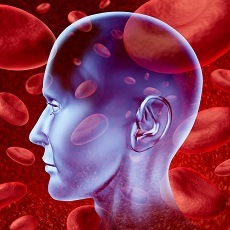 Stroke symptoms that disappear in under an hour—often referred to as a transient ischaemic attack (TIA)—need emergency assessment to help prevent a full stroke, according to a new American Heart Association (AHA) scientific statement published today in the association’s journal Stroke. The statement offers a standardised approach to evaluating people with suspected TIA, with guidance specifically for hospitals in rural areas that may not have access to advanced imaging or an on-site neurologist.
Stroke symptoms that disappear in under an hour—often referred to as a transient ischaemic attack (TIA)—need emergency assessment to help prevent a full stroke, according to a new American Heart Association (AHA) scientific statement published today in the association’s journal Stroke. The statement offers a standardised approach to evaluating people with suspected TIA, with guidance specifically for hospitals in rural areas that may not have access to advanced imaging or an on-site neurologist.
TIA is a temporary blockage of blood flow to the brain. Each year, about 240,000 people in the USA experience a TIA, although this estimate may represent underreporting of TIA because symptoms tend to go away within an hour, the AHA notes in a press release. And, while the TIA itself does not cause permanent damage, nearly one in five of those who have a TIA will have a full stroke within three months after the TIA—almost half of which will happen within two days. For this reason, the AHA believes a TIA may be more accurately described as a ‘warning stroke’ rather than its more commonly used moniker, a ‘mini-stroke’.
“Confidently diagnosing a TIA is difficult since most patients are back to normal function by the time they arrive at the emergency room,” said Hardik Amin (Yale New Haven Hospital, St Raphael Campus, New Haven, USA), chair of the scientific statement writing committee. “There also is variability across the country in the workup that TIA patients may receive. This may be due to geographic factors, limited resources at healthcare centres, or varying levels of comfort and experience among medical professionals.”
For example, Amin continued, “someone with a TIA who goes to an emergency room with limited resources may not get the same evaluation that they would at a certified stroke centre”.
“This statement was written with those emergency room physicians or internists in mind—professionals in resource-limited areas who may not have immediate access to a vascular neurologist and must make challenging evaluation and treatment decisions,” he added.
The statement also includes guidance to help healthcare professionals tell the difference between a TIA and a ‘TIA mimic’, a condition that shares some signs with TIA but is due to other medical conditions, such as low blood sugar, a seizure or a migraine. Symptoms of a TIA mimic tend to spread to other parts of the body and build in intensity over time, according to the AHA.
TIA carries the same set of symptoms as a stroke, and begin suddenly, but only manifest temporarily. They include but are not limited to facial droop, weakness/numbness on one side of the body, and slurred speech. The FAST acronym for stroke symptoms can be used to identify a TIA:
- F—face drooping or numbness
- A—arm weakness
- S—speech difficulty
- T—time to call 911, even if the symptoms go away
Which tests come first in the emergency room?
After assessing for symptoms and medical history, imaging of the blood vessels in the head and neck is an important first assessment. A non-contrast head computed tomography (CT) scan should be done initially in the emergency department to rule out intracerebral haemorrhage and TIA mimics. CT angiography may be done as well to look for signs of narrowing in the arteries leading to the brain, as nearly half of all people with TIA symptoms have narrowing of the large arteries that lead to the brain.
A magnetic resonance imaging (MRI) scan—ideally done within 24 hours of when symptoms began—is the preferred way to rule out brain injury (i.e. a stroke), according to the AHA. About 40% of patients presenting in the emergency room with TIA symptoms will actually be diagnosed with a stroke based on MRI results. Some emergency rooms may not have access to an MRI scanner, and they may admit the patient to the hospital for MRI or transfer them to a centre with rapid access to one.

Blood work should be completed in the emergency department to rule out other conditions that may cause TIA-like symptoms, such as low blood sugar or infection, and to check for cardiovascular risk factors like diabetes and high cholesterol.
Once TIA is diagnosed, a cardiac workup is advised due to the potential for heart-related factors to cause a TIA. Ideally, this assessment is done in the emergency department—however, it could be coordinated as a follow-up visit with the appropriate specialist, preferably within a week of having a TIA. An electrocardiogram to assess heart rhythm is suggested to screen for atrial fibrillation, which is detected in up to 7% of people with a stroke or TIA. The AHA further recommends that long-term heart monitoring within six months of a TIA is reasonable if the initial evaluation suggests a heart rhythm-related issue as the cause of a TIA or stroke.
Early neurology consultation, either in-person or via telemedicine, is associated with lower death rates after a TIA. If consultation is not possible during the emergency visit, the statement suggests following up with a neurologist ideally within 48 hours but not longer than one week after a TIA, given the high risk of stroke in the days after a TIA. The statement cites research indicating that about 43% of people who had an ischaemic stroke experienced a TIA within the week before their stroke.
Assessing stroke risk after TIA
A rapid way to assess a patient’s risk of future stroke after TIA is the seven-point ABCD2 score, which stratifies patients into low, medium and high risk based on age, blood pressure, clinical features (symptoms), duration of symptoms (less than or greater than 60 minutes) and diabetes. A score of 0–3 indicates low risk, 4–5 is moderate risk and 6–7 is high risk. Patients with moderate-to-high ABCD2 scores may be considered for hospitalisation, the AHA release details.
In addition, collaboration among emergency room professionals, neurologists and primary care professionals is critical to ensure the patient receives a comprehensive evaluation and a well-communicated outpatient plan for future stroke prevention at discharge.
“Incorporating these steps for people with suspected TIA may help identify which patients would benefit from hospital admission, versus those who might be safely discharged from the emergency room with close follow-up,” Amin said. “This guidance empowers physicians at both rural and urban academic settings with information to help reduce the risk of future stroke.”
This scientific statement was prepared by the volunteer writing group on behalf of the AHA’s Emergency Neurovascular Care Committee of the Stroke Council and the Council on Peripheral Vascular Disease. The American Academy of Neurology (AAN) has affirmed the value of this statement as an educational tool for neurologists, and it is also endorsed by the American Association of Neurological Surgeons (AANS) and Congress of Neurological Surgeons (CNS).












